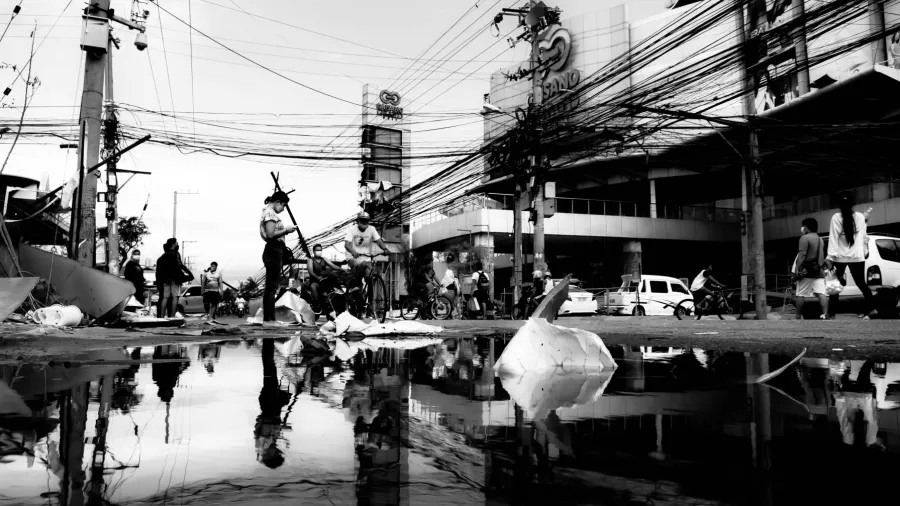
Natural disasters steer Asia Pacific towards parametric insurance
Swiss Re gives importance to parametric insurance amidst challenges like basis risk and modelling complexities.
Seeing the scourge of natural disasters in the 21st century, the market for parametric insurance in the Asia Pacific (APAC) region is bound to experience substantial growth. Research and Markets reports a projected Compound Annual Growth Rate (CAGR) of 10.6% for parametric insurance in the period of 2022 to 2028.
Swiss Re Corporate Solutions believes this is driven by increasing awareness of the benefits of parametric insurance and the need for innovative risk mitigation solutions in the face of escalating weather hazards and climate change.
Andre Martin, Swiss Re Corporate Solutions' head of Innovative Risk Solutions for APAC, explained that whilst traditional insurance compensates for actual incurred costs resulting from damage to physical assets, parametric insurance operates on a distinct premise: It hedges against the probability of predefined events, triggering payouts based on predetermined indices or parameters.
“Now, parametric insurance is fundamentally different because it covers the probability of a pre-agreed event happening. So it relies 100% on the measurement of an index or parameter like the magnitude of an earthquake, or the storm category of a typhoon,” Martin told Insurance Asia.
“Once this measurement exceeds a certain pre-agreed threshold, that’s when the policy is triggered, and the payout is then a pure function of this measurement or index,” he added, citing how this approach divorces insurance payouts from direct assessments of asset damage to enable swift and transparent claims settlements.
For what it’s worth, detachment from underlying assets allows for a broader application, encompassing non-damage business interruption and pure financial loss covers. Furthermore, whilst traditional insurance relies on complex vulnerability curves to assess damage, parametric insurance simplifies the process by focusing solely on the probability of occurrence.
Industry status
As reported by Research and Markets, the region’s parametric insurance market is poised for a CAGR of 10.6% for the forecast period of 2022 to 2028. The projected jump is further propelled by recent natural calamities, such as powerful volcano eruptions and earthquakes, which have highlighted the importance of not disregarding these types of disasters in the region.
“Companies that can identify the perfect use instances and put the capabilities of the parametric to work for their business and consumers are predicted to have a wide range of opportunities as more parametric applications are investigated. As a result, it is anticipated that these elements will rise significantly in the coming years,” it noted.
Disruptions caused by the COVID-19 pandemic also brought forth the need for innovative risk mitigation solutions and affected established procedures for prevention, response, and recovery in natural disasters.
All these lead to accepting the importance of parametric insurance as a safety net to mitigate the impact of extreme disasters on the region’s growing trade.
China now dominates the region’s parametric insurance market and is expected to maintain its dominance until 2028, reaching a market value of $1.6b. Meanwhile, Japan and India are anticipated to experience significant growth during the forecast period with CAGRs of 10% and 11.3%, respectively.
The market is segmented based on types of insurance, including natural catastrophes insurance, specialty insurance, and others. Additionally, it is segmented based on verticals such as agriculture, construction, aerospace & defence, mining, manufacturing, energy & utilities, amongst others.
The constant state of calamity
Martin noted as an exemplary case the efficacy of parametric insurance for the Philippines when Typhoon Odette struck in 2021. Martin recounted how a power utility in Cebu was swiftly compensated within 12 days of the event, facilitating expedited restoration efforts without the encumbrance of extensive documentation or loss quantification procedures.
This rapid response underscores the value of parametric insurance in providing timely relief to insured parties, particularly in the aftermath of natural disasters.
Climate change is set to exert a more substantial toll on economic losses in the future, according to the Swiss Re Institute. An analysis of 36 countries identified the Philippines and the US as the most economically exposed nations today, with climate change likely to intensify hazards in these regions.
Jérôme Jean Haegeli, Swiss Re’s group chief economist, emphasised the urgency of adaptation measures in light of the increasing severity of weather events.
“Risk reduction through adaptation fosters insurability. The insurance industry is ready to play an important role by catalysing investments in adaptation, directly as a long-term investor and indirectly through underwriting climate-supportive projects and sharing risk knowledge,” Haegeli said in a statement.
“The more accurately climate change risks are priced, the greater the chances that necessary investments will actually be made,” he added.
The Swiss Re Institute’s report, “Changing Climates: The Heat is (Still) On,” combines findings from the Intergovernmental Panel on Climate Change (IPCC) with its assessments of economic losses resulting from major weather perils.
The Philippines ranks highest amongst the 36 countries, experiencing annual economic losses of 3% of GDP as of today. The US follows closely, facing the highest absolute economic losses from weather events worldwide, particularly driven by tropical cyclones.
Countries with significant insurance protection gaps and lagging establishment of loss mitigation and adaptation measures are particularly vulnerable to hazard intensification. Fast-growing Asian economies like Thailand, China, India, and the Philippines are notably at risk, according to the report.
Flood risk is projected to intensify globally, with tropical cyclones emerging as the primary driver of major weather-related economic losses in the US and parts of Asia. Severe thunderstorms also contribute significantly to economic losses in these regions.
Adaptation measures, such as enforcing building codes and enhancing flood protection, are crucial steps towards reducing loss potential. However, the future trajectory of losses as a share of GDP will hinge on the effectiveness of adaptation, loss reduction, and prevention efforts in each country.
Challenges and direction
Despite its merits, parametric insurance is not without its challenges, Martin cautioned. “Whatever index or parameter we choose, it is always only going to be an imperfect proxy for the actual financial impact that we want to cover. So, there will always be some residual basis risk remaining,” he said.
Basis risk is defined as the difference between the actual financial impact suffered by the insured party and the payout received under the insurance policy. “It is the art of structuring the right solution, selecting the right indices and refining the payout tables to minimise the basis risk as much as possible. However, basis risk is an inherent feature of any parametric insurance transaction,” Martin stated.
Advancements in data analytics and reporting are driving ongoing progress in parametric insurance. These developments enable insurers to use more specific indices and parameters that are closer correlated to the financial impacts they aim to address.
“I think a good example of this continuous development is what we generally call the second generation of parametric insurance, where we use intensity-based triggers, like the shaking intensity of an earthquake at the specific location of the insured asset, or the wind speeds of a typhoon at the specific location of the insured asset,” Martin said. “These intensity triggers have proven to be much closer correlated with and therefore better proxies for the actual financial loss, and thereby reducing basis risk.”
Moreover, expansions beyond traditional weather-related perils into areas such as supply chain disruption and loss of attraction demonstrate the versatility and adaptability of parametric solutions.
Looking ahead, Swiss Re envisions parametric insurance transitioning from a niche offering to a mainstream staple, buoyed by growing acceptance and efficacy.
“Hurricane Ian in the US, the earthquake in Morocco, and more recently the earthquake at the beginning of the year in Japan have all proven that parametric insurance covers work exactly how they are designed and expected to perform,” Martin told Insurance Asia.
The collaborative efforts with industry partners and stakeholders, coupled with educational initiatives, seek to demystify parametric solutions and foster broader adoption.
“At the moment, we see that parametric insurance is probably still predominantly used for operational insurance, but I think the construction sector is certainly picking up and we see more and more interest there,” he said.
Whilst parametric insurance remains a niche product in the wider insurance product range, Swiss Re recognises it as an important differentiator. The firm may not see parametric insurance as anything to replace traditional insurance, but it serves to complement traditional insurance and fill the gaps left by other conventional programmes.
“And with that, we see this type of insurance also as a very important tool to help to reduce the insurance gap, particularly in Asia, where this protection gap is quite high compared to the rest of the world,” Martin said.



















 Advertise
Advertise







